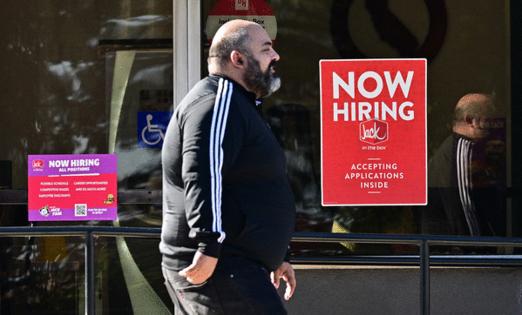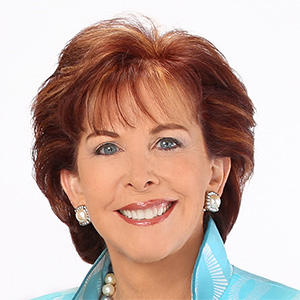US job growth outperforms expectations as hiring resurges and unemployment drops
Published in Business News
An unexpectedly large surge in job creation last month, coupled with a downtick in unemployment, was good news for the economy, for the Federal Reserve and for Democratic politicians because it suggested policymakers have managed, thus far, to curb inflation without triggering a recession.
The addition of 254,000 jobs in September, reported by the government Friday, was well above the average of 203,000 monthly gains over the last year. It blew past analysts' expectations and indicated that the economy has more legs than previously thought, despite a worrisome slowdown in hiring over the summer.
At the same time, the unemployment rate dropped to 4.1% from 4.2% in August.
Employers in an array of industries added to their payrolls, led by eating and drinking businesses, healthcare and government. Construction payrolls rose over the month, as did retail. Manufacturing and transportation and warehousing jobs, however, declined slightly, and there was little change in business services and information, which includes the struggling film industry.
"The report doesn't single-handedly change the landscape for the economic outlook, but it does provide reassurance that there's still plenty of life in the jobs market," said Jim Baird, chief investment officer with Plante Moran Financial Advisors, a major accounting firm based in the Detroit area.
The strong hiring in September, plus a pickup in wage gains to a 4% annual pace — notably faster than the rate of inflation — comes on the heels of the Federal Reserve's big, half-point reduction in interest rates last month, the first rate cut since 2020. With inflation now seemingly under control, the central bank is focusing on supporting the job market.
After Friday's report, most analysts say they expect a quarter-point cut at the Fed's next meeting in early November. Stocks initially jumped on news of the latest employment numbers, then dropped and rose again in a volatile day on Wall Street.
The monthly jobs report is viewed as the single most important economic indicator. The October report will be released Nov. 1, a few days before the Fed meeting and the national election, in which the economy has been a top concern for voters.
The September employment statistics for states won't be released until later in the month. California's latest jobless figure was 5.3% in August, the second highest in the nation, although job growth in recent months has been keeping pace with the national rate.
At this late point in the political calendar, new economic reports aren't likely to sway a lot of voters, who typically have settled on their candidate of choice by the summer. Polls suggest that the lingering effects of inflation have cast a shadow over the economy in the minds of many voters, but the labor market has rarely been as resilient — and that goes for most key battleground states.
Arizona, Georgia, North Carolina and Pennsylvania all had lower unemployment rates in August than the country's 4.2% for that month, according to the U.S. Bureau of Labor Statistics. And their pace of job growth has been as strong if not stronger than the national average.
Wisconsin's jobless rate was just 2.9% in August, and although Nevada has the highest unemployment in the land, at 5.5%, the state is adding jobs at double the speed of the country. Meanwhile, Michigan's unemployment and job-growth rates are slightly worse than for the U.S. as a whole.
"If people are looking at the labor market, I would think they would have to be pretty happy," said Dean Baker, an economist at the Center for Economic and Policy Research in Washington who, like other analysts, was worried after the jobless rate rose to 4.3% in July from 3.7% at the start of the year. But after Friday's report, he said, "This is a really low unemployment rate by historical standards, and most of the swing states are doing even better."
Baker said the job market has been bolstered by federal spending and investments, as well as larger inflows of immigrants, who, while stirring fresh controversies, also have filled many jobs.
The future may be a bit cloudy, with the conflict in the Middle East and uncertainties hanging over the election Nov. 5. Also, the October job numbers could be affected by the devastating effects of Hurricane Helene and a strike by Boeing workers if that persists, even as the suspension of large-scale picketing by dockworkers at East and Gulf coast ports removed another potential hit to the employment numbers.
Cory Stahle, an economist at Indeed Hiring Lab, said next month's report may not be so reassuring, reflecting the fluctuation in the data month to month. But "the labor market isn't on the brink of collapse," he said, although he added that Fed interest rate cuts may be needed to sustain the momentum.
"Another half-point cut in the interest rate in November is now out of the question; a quarter-point cut is likely," said Sung Won Sohn, professor of economics and finance at Loyola Marymount University. "The central bank will proceed with a series of small cuts in the interest rate."
©2024 Los Angeles Times. Visit at latimes.com. Distributed by Tribune Content Agency, LLC.












Comments